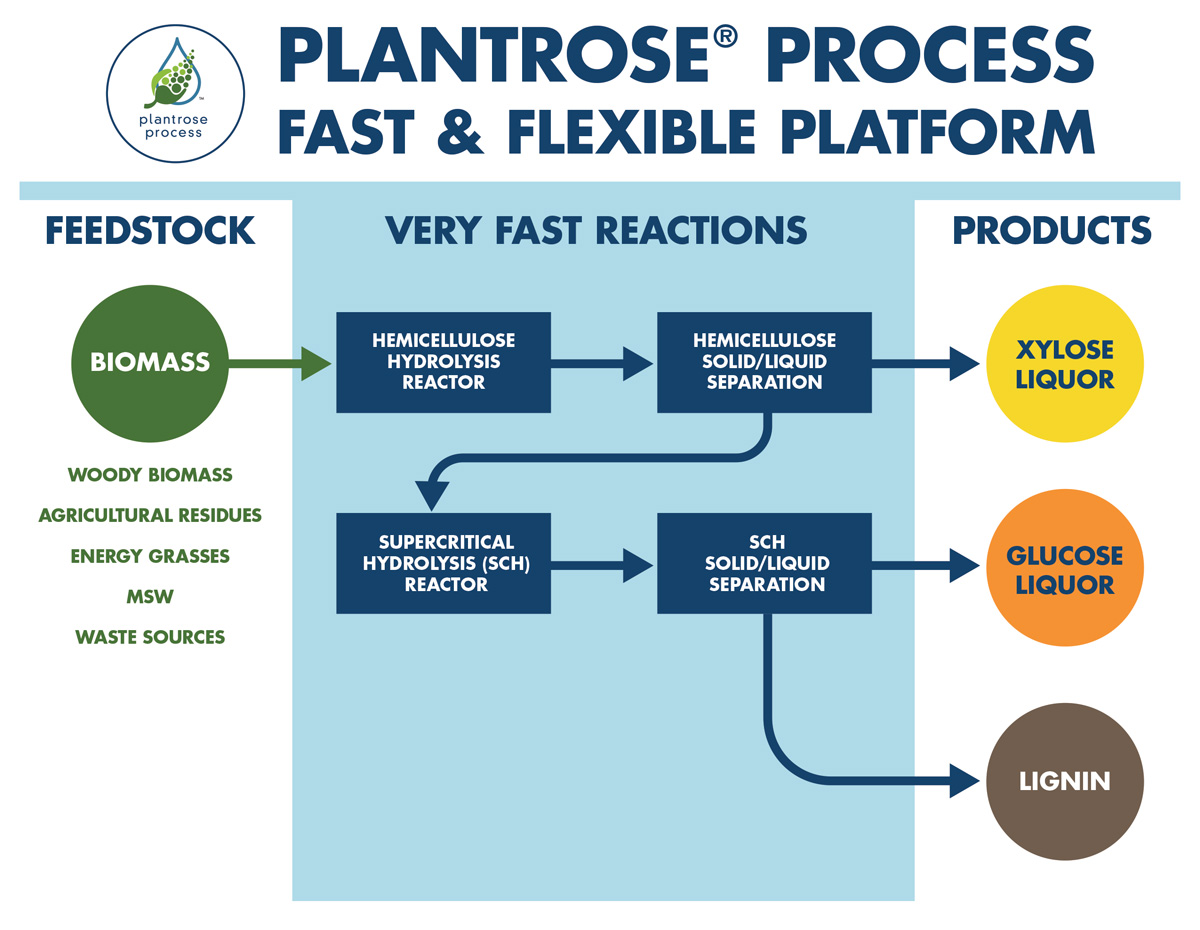
The Plantrose® process is a technology platform developed by Renmatix to convert non-food biomass into industrial sugars and novel polymers.
The Basics
Plantrose technology is a continuous process that deconstructs a range of plant material into renewable feedstocks to produce separate streams of sugars from hemicellulose (e.g. xylose) and cellulose (e.g. glucose). After sugar extraction, remaining lignin solids can be burned to supply heat energy required for the process (or utilized in higher value applications like adhesives or thermoplastics).

In Detail
The first step is called 'hemihydrolysis' where water and heat are combined with the biomass, and the hemicellulose fraction is solubilized and separated from the solids, which contain cellulose and lignin. The solubilized hemicellulose stream becomes one sugar product stream. The solids are sent to the second step called 'supercritical hydrolysis' (cellulose hydrolysis utilizing supercritical water, or water at higher temperatures and pressures), as the reaction mechanism. Here, supercritical water acts as both a solvent and a catalyst, but returns to being normal water when cooled. In this step, the cellulose is solubilized and separated from the solids. The soluble cellulose stream becomes a second sugar product stream, and the solids are collected as a clean lignin that can be used for thermal value or for production of chemical intermediates.
Specifically, in the first step biomass undergoes size reduction as necessary, and is then conveyed to a storage silo. The stored solids are then slurried with water and pumped and heated to reaction temperature, and then fed to the fractionation reactor. The products from the fractionation reactor are then sent to solid/liquid filtration and stored. At this point the hemicellulose sugar stream has been collected.
In the second step, the resulting solids from the hemihydrolysis process (consisting predominantly of cellulose and lignin) are sent to a blend tank where they are re-slurried by mixing with water. This thick slurry is then pumped into the system at pressure and preheated. The preheated slurry is further treated with hotter, compressed water and undergoes a rapid reaction. The products from this reaction are then cooled and filtered. Glucose product has now been collected, and remaining solids (in the form of clean odorless lignin), are also captured.

